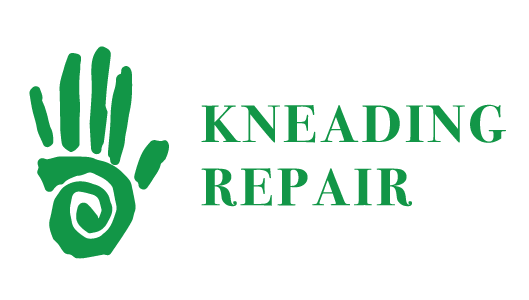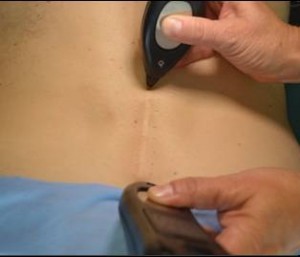Source: http://nationalpainreport.com/my-story-scar-relief-therapy-8824928.html
I am a mother, wife, and occupational therapist. Twelve years ago my therapeutic pathway shifted from the traditional approach, which I learned in school, to Microcurrent Point Stimulation (MPS), an FDA approved treatment for pain that combines the principles of acupuncture and neurology with microcurrent stimulation.
MPS applies a low electric current non-invasively over the skin of key acupuncture and trigger points to duplicate the pain relieving and cellular changing benefits of acupuncture. When MPS is applied through scars — for the purpose of “releasing” scars — it is called Scar Release Therapy or SRT.
At a pain seminar, an integrative physician taught me how scars, acupuncture points and microcurrent can strongly influence our bodies. This approach completely fascinated me and became my passion. My new outcomes with patients were amazing and I saw true healing taking place in the body.
The feedback that I began getting from my patients was shocking! It appeared that they were getting more pain reduction and improvement in functionality from the scar release than from the other treatment techniques I employed.
This led me to collect data on the scar release treatment to measure its efficacy. From the data collected from hundreds of treatments provided by various therapists, we found that in a single SRT session a patient’s pain could decrease 60% to 80%, depending on the location of the scar on the body.
SRT is based on the theory that scars and adhesions can adversely affect the structural and fascial systems, sensitize the nervous system, and cause chronic pain throughout the body.
Scars are a result of the body’s remarkable power to heal itself. Scars develop after the deeper layer of skin, the dermis, is damaged. New collagen fibers are laid down at the site of the wound to repair the tissue. These fibers grow in random and unorganized patterns, forming adhesions underneath the scar itself. Adhesions can form deep within the body, attaching to muscles, bones, tendons, and organs.
Imagine how a single pull of this matrix fascial tissue and how it could misalign or cause imbalance in any number of the systems throughout the body.
Here are five reasons why scars may be adversely impacting your health and driving your pain cycles.
1) They can cause a great deal of pain in your body without you even knowing! Scars cause hypersensitivity in the nervous system and appear to contribute to many chronic pain conditions. Neural therapy shows us the cellular tissue change at a scar site sends noxious stimuli to the nervous system. The scar itself may not hurt, but it can cause pain throughout the body.
2) Scars produce pain as a result of poor body posture and structure. Scars pull the fascia concentrically inward towards the middle of the body. This fascial pull acts like a straight jacket inside the body, putting pressure on muscles and nerves, causing pain, and misaligning the skeletal system. This is especially important with abdominal scarring as it seems to distort body positioning, pulling us in a constant forward flexed position. This increases the degeneration of our spines and can create pain in the upper and lower limbs.
3) Scars can diminish organ functioning. Since the fascia wraps around organs, muscles, and tissues, it can negatively affect their performance. Adhesions can affect all internal organs or systems – including the ovaries, bowel and bladder.
I have found in the treatment of patients that releasing abdominal scars significantly improves organ functioning by reducing hormonal fluctuations and improving digestive issues. Having the scar from your C-section released is key if you’re suffering from digestion issues, back pain, hot flashes or sexual dysfunction.
4) Scars can cause electrical disruptions, impairing system functioning and circulation. The scar itself acts like a dam and blocks the vertical flow of electrical connection within your nervous system, which interferes with organ or system functioning.
5) Scars cause emotional trauma. The emotions that surround traumatic accidents, injuries, and surgeries can get trapped and locked into the cellular memory of tissue, causing post-traumatic stress (PTSD). SRT permits the “letting go” or release of emotional trauma stored inside the scar tissue.
SRT has often been called “needleless neural therapy.” It forces electrons through the thickened scar, stimulating lymphatic drainage and softening the scar and surrounding tissues. The newly released scar is much softer and pliable, with visibly improved blood circulation and diminished appearance. This produces a significant “calming” effect and reduces pain and muscle spasms in patients.
Every year, approximately 80 million new surgical scars are produced by hospitals. Pile that on top of the additional 70 million new trauma scars each year, and you may understand why 100 million Americans suffer from chronic pain.
With few therapists or physicians paying attention to the long term effects of surgical scars on pain, SRT therapists who can effectively release scars can help pain patients with failed outcomes from previous therapy and medications.
Kelly Armstrong lives in Jacksonville, Florida.
National Pain Report invites other readers to share their stories with us.
Send them to editor@nationalpainreport.com
The information in this column is not intended to be considered as professional medical advice, diagnosis or treatment. It is for informational purposes only and represents the author’s personal experiences and opinions alone. It does not inherently or expressly reflect the views, opinions and/or positions of National Pain Report or Microcast Media.

